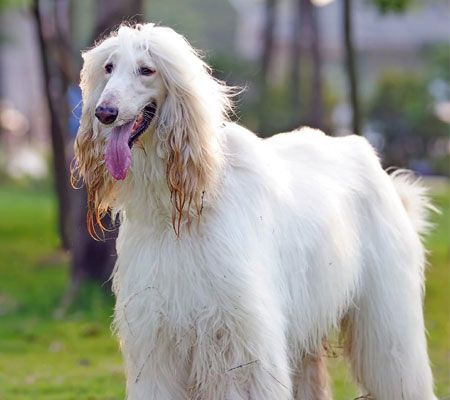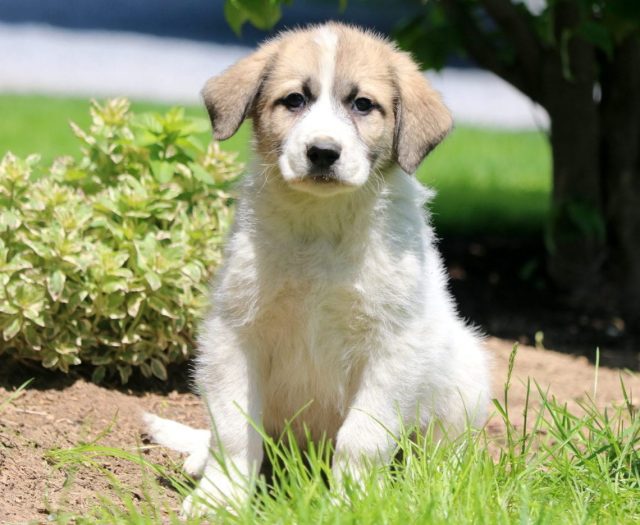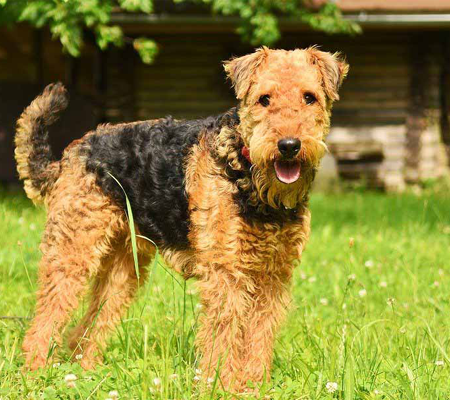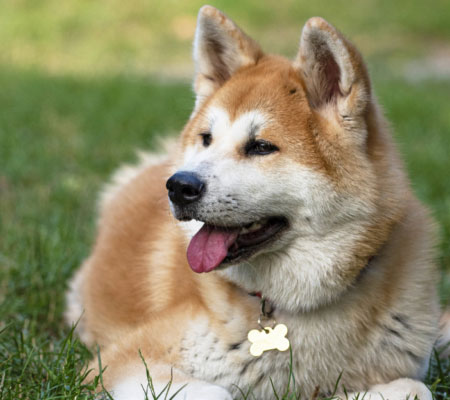This old Belgian street dog is a rare and odd
canine breed that was designed to hunt and kill rats. Despite its small size,
the Brussels Griffon is far from a spoiled dog. Their intellect, sense of
humour, and attitude of self-importance keep them one step ahead of their
owners, who already adore their puppies.
Despite the fact that they are purebred dogs,
they may still be found at shelters and rescues. Keep in mind to adopt! If you
want to bring a dog home, don't go shopping.
Griffons adapt well to apartment living, although
the neighbours may not enjoy this little watchdog's proclivity for barking at
the first indication of trouble. For their small, these dogs have a lot of
energy and require a lot of exercise and entertainment. Novice pet owners
expecting a calm lapdog may be disappointed to discover that this pup does not
stay still for as long as they had hoped. Humans who can satisfy the breed's
requirements and keep up with training, on the other hand, will be rewarded
with a loving and devoted family member.
Brussels Griffon Highlights
Breed Size
Small
Nature
Gentle, Friendly, Playful, Outgoing, Willful
Energy Level
Active
Intelligence
High
Barking Level
Frequent
Coat Length
Short, Medium, carly
Breed Group
Toy
Droll Amount
Low
Good with
Seniors, Cats, Dogs, Children, Familes
Feed Level
Normal
Colour Type
Red,black,brown / chocolate / liver,blue
Other Facts
Easy to train,prone to health issues,high prey drive,high potential for weight gain, loves water,apartment-friendly,good for first-time pet owners.
Dog History
Brussels Griffons have their origins in Belgium,
where small, terrier-like dogs were developed to hunt and kill vermin in
stables, particularly those of horse-drawn hansom cabs (today's taxis) in
cities.
The Affenpinscher, Pug, and English Toy Spaniel
were all used to produce the Brussels Griffon as we know it today. The stature
and wiry coat texture come from the Affenpinscher, while the wide, expressive
eyes, rounded head, and upturned underjaw come from the Toy Spaniel. The Pug
influence may be observed in the Brussels Griffon smooth-coated breed.
These crosses eventually produced the Brussels
Griffon, or Griffon Bruxellois in Europe, a tiny dog with excellent rat-hunting
talents and a nearly human-like face.
These cheeky little pups were popular as house
pets for noblemen and labourers alike throughout time. Belgian breeders
produced a standard for the breed in 1883, which was a written description of
how the dog should appear, and began entering them in dog competitions. The
small Griffon Bruxellois fell in love with Marie Henriette, Belgium's queen and
a dog aficionado, and she began breeding and marketing them in Europe and
worldwide. The Griffon Bruxellois Club was founded in 1889 in Brussels, and the
smooth-coated type was given the name Griffon Brabancon.
In the early 1890s, both rough-coated and
smooth-coated Brussels Griffons were sent to England. The breed was accepted
into the English Stud Book in 1898, and clubs were founded to further improve
the breed.
Around the same period, the Griffon arrived in
the United States. The American Kennel Club registered the first Brussels
Griffons in 1899, and they were presented in the Westminster Kennel Club dog
show. In 1900, the American Kennel Club recognised the breed as a distinct
breed.
During World Wars I and II, when breeding dogs —
or even keeping a little dog as a pet — was a luxury few could afford, Griffon
numbers plummeted. Brussels Griffons were virtually extinct in their native
Belgium at the conclusion of World War II, but they survived in England largely
to the efforts of English breeders.
Although they were popular in the late 1950s and
again in the late 1990s after a Griffon outshone Jack Nicholson in the film As
Good As It Gets, Brussels Griffons have remained a rather rare breed.
10-14 inch 8-14 kg 13-15 year
Height

Weight

Life Span
Health and Care
Griffons are typically healthy, however they are
susceptible to some health issues, as are other breeds. Although not all
Griffons will contract any or all of these illnesses, it's vital to be aware of
them if you're thinking about getting one.
Find a reliable breeder who will show you health
clearances for both your dog's parents if you're buying a puppy. Health
clearances demonstrate that a dog has been checked for and cleared of a certain
disease. You can expect to see health clearances from the Orthopedic Foundation
for Animals (OFA) for hip dysplasia (with a score of fair or better), elbow
dysplasia, hypothyroidism, and von Willebrand's disease in Griffons;
thrombopathia from Auburn University; and normal eyes from the Canine Eye
Registry Foundation (CERF) in Griffons.
- Hip Dysplasia
- Patella Luxation
- Eye Problems
- Skin Allergies
Care
Griffons are unquestionably housedogs. Their
modest size, though, makes them suitable for any home, from city highrises to
country estates, as long as they're inside with the family. They can wow you
with their natural rat-hunting ability in either location.
They have a lot of energy and require frequent
exercise to keep in condition, but they may get by without a yard if they get
daily walks or other forms of exercise. They can't chill the air they breathe
in since they have a small snout, and they might overheat on hot, humid days.
On a hot day, put your Griffon somewhere cold to avoid heat stroke. If you do
take him out in the sun, keep an eye out for indications of heat exhaustion,
such as sluggishness and heavy, fast gasping. Vomiting or diarrhoea, as well as
seizures, are more dangerous symptoms. On a hot day, don't let him play hard,
and make sure he gets enough of fresh, refreshing water.
The Griffon's intellect and athletic skills make
him a competitor in dog sports like agility, obedience, and even tracking,
provided you can persuade him that it's worth it. Positive reinforcement —
praising your dog for doing things correctly rather than penalising him for
making errors — is the only method to persuade a Griffon to cooperate. You
can't make a Griffon do anything, but you may convince him that it was his
idea.
Brussels Griffons, like many other petite breeds,
may be difficult to housetrain. If you employ crate training and are consistent
and persistent, your dog may become house-trained. Or maybe not.
Dog Breed Care Tips and
Important Instructions
The two variants of this breed have different
grooming requirements. Except during seasonal shedding (typically in the spring
and fall), when daily bushing is recommended for the week or two it takes for
them to blow their coat, the smooth-coated Brussels griffon requires only a
weekly brushing and the occasional wash.
Although the rough-coated Brussels griffon does
not shed much, it does require more maintenance. That lovely beard and shaggier
hair need to be groomed by a groomer or by their owner to keep nice and tidy.
Brushing this sort of coat more frequently can help it.
According to Mason, griffons need to wash their
teeth every day since their face shape makes them more susceptible to
periodontal disease. "They also require an annual anaesthetic dental
cleaning," she adds.
If you want to maintain your Brussels griffon
healthy, you must exercise him on a regular basis. Unfortunately, toy breeds
who are content to merely snuggle on a lap may not make it clear that they want
to go for a walk. Mason claims that without regular activity, this breed has a
predisposition to gain weight.
Socially, Brussels griffons adore their owners,
but they also like playing with other dogs. They're kind and affectionate, and
they just want to be with their owner in any scenario.
With Brussels griffons, early and regular
training yields quick results.
"All these dogs think about is how they can
please you," Vickers-Smith says. "If you start working with them at a
young age, they're easy to teach with plenty of positive reinforcement."
Although house training takes time, Vickers-Smith
warns that many owners have unreasonable expectations. "No one thinks
about how difficult it is for a young puppy to retain their bladder at that age,
or how little that bladder must be."
Feeding
1/4 to 1/2 cup of high-quality dry food each day,
split into two meals, is the recommended daily quantity.
The amount of food your adult dog consumes is
determined by his size, age, build, metabolism, and degree of activity. Dogs,
like people, are unique individuals that require different amounts of food. It
practically goes without saying that a dog that is very active will require
more than a dog who is sedentary. The type of dog food you buy makes a difference
as well; the better the dog food, the more it will nourish your dog and the
less you'll have to shake into his bowl.
Rather than putting food available all the time,
measure his food and feed him twice a day to keep your Griffon in good form.
Give him the eye and hands-on tests if you're not sure if he's overweight. Look
down at him first. There should be a waist visible. Then, with your thumbs down
his spine and fingers stretched downward, place your hands on his back. Without
pressing too much, you should be able to feel but not see his ribs. If you
can't, he'll need to eat less and exercise more.
Fun Facts
- On Instagram, Brussels griffons are quite
popular. Follow the sweetness of Digby Van Winkle, Brussels Sprout, or the Bone
Squad, a family of six.
- Ashley Benson (from "Pretty Little
Liars" and Spring Breakers) owns a Brussels griffon named Walter Gene
Benson.
- In Star Wars: Return of the Jedi, George Lucas
drew inspiration from the Brussels griffon to create the Ewoks.
Home Training Tips and General
Information
- Don't push your Brussels Griffon over his or her
limits.
- During training and exercise, you must consider
the health characteristics of this breed. The fact that they are prone to
overheating is one of the most significant things to keep in mind. This is due
to the shape of their nose.
- As a result, you should make sure they are not
overworked during any activity. You should not be fooled by this breed's desire
to act as though they have it all together. This is why it is recommended that
you take rests in between both activities.
- Patience will be useful.
- When dealing with this breed, patience will help
you achieve a lot. As a result, you should not give up on them, especially when
it comes to training. This is because they may attempt to assume the role of
alpha dog and be domineering.
- You will ultimately enjoy the benefits if you
have patience and the correct type of persistence. However, a good training
process takes more than patience and positive persistence. In the following
section, we'll go over this in further detail.
- Make Training and Exercising a Pleasure
- This is especially effective with breeds like the
Brussels griffon. This strategy will eliminate their predisposition to be
sceptical of the training procedure. Using this strategy, you should make the
activities worthwhile for them.
- Treats are one of the most effective methods to
accomplish this. However, you must exercise extreme caution in not abusing the
usage of treats. This has a propensity to happen, so you should be intentional
in your efforts to avoid it.
- Repetition
- When you repeat teachings with this breed, you
may build confidence and discipline. This is why you should be adamant about
following your instructions and repeat them several times.
- If the repetition goes on for too long, kids will
get bored and uncooperative. As a result, it's best to keep training sessions
short.
FAQS
|
Is it true that Griffon dogs bite? |
|
Griffons are sensitive canines who may become fear biters if they are
treated harshly. Fear biters bite out of fear rather than hostility. |
|
What is the best way to care for a Griffon dog? |
|
Brush your griffon twice a week and only wash him when necessary, which
should be occasionally. Griffons can have either a rough or a smooth coat.
The tough coat is wiry and thick. The greatest colour and ornamentation are
seen on rough-coated griffons, who have fringed hair around their face
features. |
|
What is the price of a Griffon dog? |
|
Adopting a Brussels Griffon costs roughly $300 to cover the costs of care
for the dog prior to adoption. Buying Brussels Griffons from breeders, on the
other hand, might be unreasonably expensive. They range in price from $800 to
$4,000 depending on their breeding. |
|
Is the Brussels Griffon a cuddly creature? |
|
Don't be fooled by the Brussels Griffon's arrogance; this is a lovable,
family-oriented breed. Griff normally has a favourite person, but he is open
to playing with everyone. They frequently forget their size and, while
weighing only 10 pounds, have a mastiff-sized attitude. |
|
Are Griffon dogs intelligent? |
|
The Brussels griffon is a petite, clever dog that is ideal for apartment
life and households with limited backyards. Other household dogs and cats are
accepted in this breed. If not properly taught, Brussels griffons can bark
excessively. |
|
Do Griffon dogs suffer from any health issues? |
|
With a lifetime of 12 to 15 years, the Brussels Griffon is susceptible to
diseases such as weak bladder, distichiasis, patellar luxation, canine hip
dysplasia (CHD), cataracts, and progressive retinal atrophy (PRA).
Fortunately, the breed is not prone to any significant or small health issues. |
|
What is the cost of a Brussels Griffon? |
|
With patience and a lot of study, you should be able to get one for about
$1000, if not less, while still using a respectable breeder. |
|
How often should a Brussels Griffon be bathed? |
|
Dogs should be bathed every three months as a general rule, although
wire-coated dogs can be bathed more frequently, commonly every four to six
weeks. The coat should be clean, lustrous, and free of loose or losing hair.
Brush the dog thoroughly to eliminate any dead hair or mats. |
Brussels Griffon Unique Name
| Male Name | Female Name |
|---|---|
| Bentley | Abby |
| Chewy | Brownie |
| Copper | Camilla |
| Felix | Casey |
| Huck | Cookie |
| Ned | Delia |
| Otis | Diamond |
| Quincy | Ivy |
| Ringo | Jade |
| Sarge | Karma |
| Shadow | Nola |
| Simba | Pearl |
| Theo | Sally |
| Wrigley | Sweetie |
| Wyatt | Winnie |
| Oscar | Cameo |
| T-bone | Claire |
| Tex | Keesha |
| Volvo | Kerry |
| Xena | Blu |





